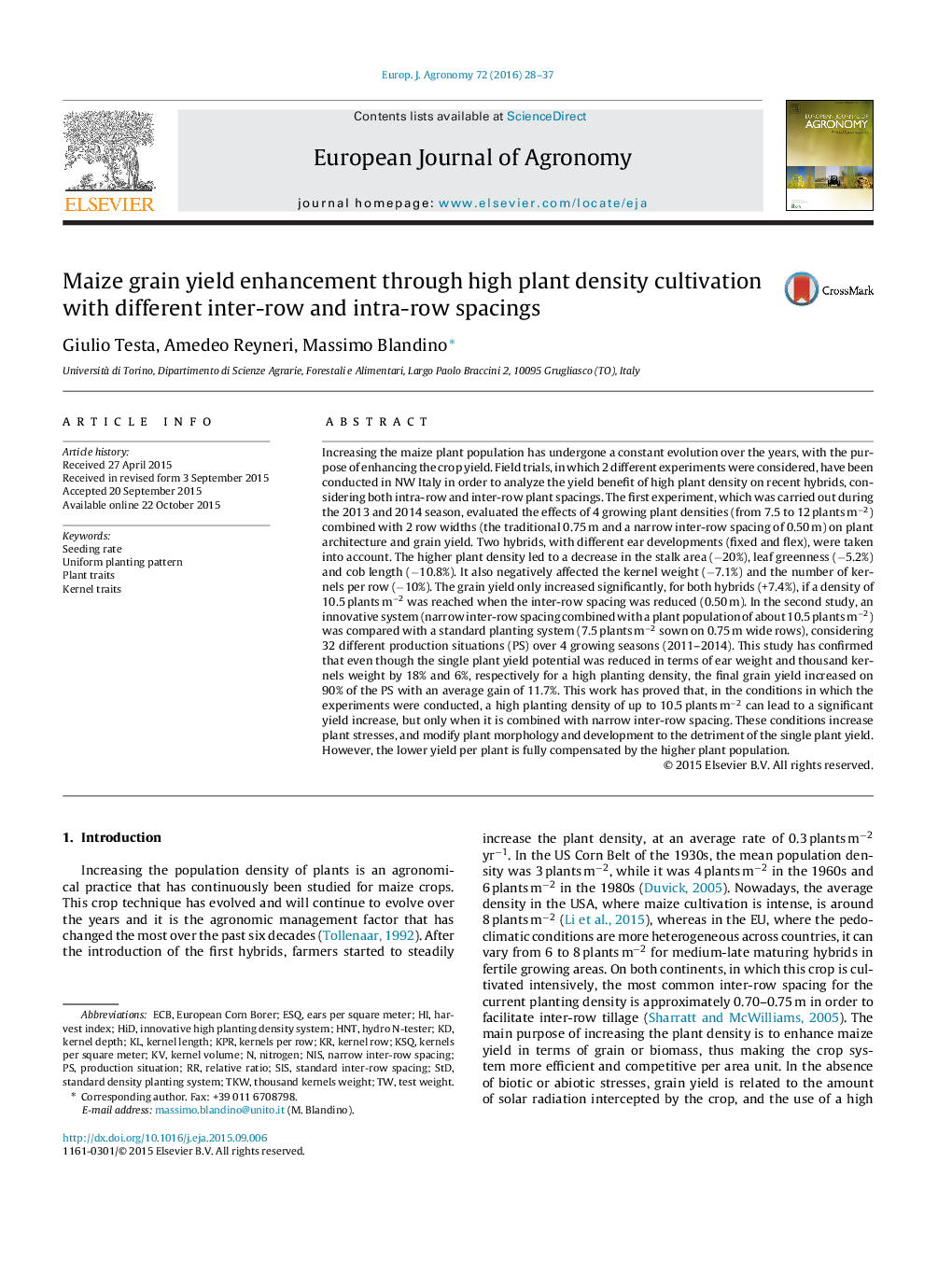| کد مقاله | کد نشریه | سال انتشار | مقاله انگلیسی | نسخه تمام متن |
|---|---|---|---|---|
| 4508708 | 1624453 | 2016 | 10 صفحه PDF | دانلود رایگان |
• Variations in planting patterns for increased densities are evolving.
• A high planting density was effective on yield if the inter-row spacing was narrow.
• When the planting density is increased, the single plant yield potential is reduced.
• The lower single plant yield potaential is balanced by the higher plant population.
Increasing the maize plant population has undergone a constant evolution over the years, with the purpose of enhancing the crop yield. Field trials, in which 2 different experiments were considered, have been conducted in NW Italy in order to analyze the yield benefit of high plant density on recent hybrids, considering both intra-row and inter-row plant spacings. The first experiment, which was carried out during the 2013 and 2014 season, evaluated the effects of 4 growing plant densities (from 7.5 to 12 plants m−2) combined with 2 row widths (the traditional 0.75 m and a narrow inter-row spacing of 0.50 m) on plant architecture and grain yield. Two hybrids, with different ear developments (fixed and flex), were taken into account. The higher plant density led to a decrease in the stalk area (−20%), leaf greenness (−5.2%) and cob length (−10.8%). It also negatively affected the kernel weight (−7.1%) and the number of kernels per row (−10%). The grain yield only increased significantly, for both hybrids (+7.4%), if a density of 10.5 plants m−2 was reached when the inter-row spacing was reduced (0.50 m). In the second study, an innovative system (narrow inter-row spacing combined with a plant population of about 10.5 plants m−2) was compared with a standard planting system (7.5 plants m−2 sown on 0.75 m wide rows), considering 32 different production situations (PS) over 4 growing seasons (2011–2014). This study has confirmed that even though the single plant yield potential was reduced in terms of ear weight and thousand kernels weight by 18% and 6%, respectively for a high planting density, the final grain yield increased on 90% of the PS with an average gain of 11.7%. This work has proved that, in the conditions in which the experiments were conducted, a high planting density of up to 10.5 plants m−2 can lead to a significant yield increase, but only when it is combined with narrow inter-row spacing. These conditions increase plant stresses, and modify plant morphology and development to the detriment of the single plant yield. However, the lower yield per plant is fully compensated by the higher plant population.
Figure optionsDownload as PowerPoint slide
Journal: European Journal of Agronomy - Volume 72, January 2016, Pages 28–37
